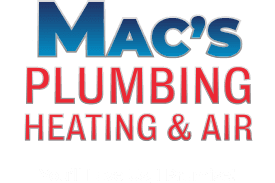Understanding Indoor Air Pollutants
Common Sources of Indoor Air Pollution
When we think of air pollution, we often envision smoggy city skylines or industrial smokestacks. However, the air inside our homes can be just as polluted, if not more so. A myriad of sources contribute to indoor air pollution, including volatile organic compounds (VOCs) that waft from fresh paint and new furnishings. Mold spores silently proliferate in damp areas, while pet dander and dust mites become part of the household's fabric. Tobacco smoke, a particularly insidious offender, can linger long after the smoke clears, embedding toxins into every nook. Understanding these common culprits is the first step towards purifying the air we breathe in our most intimate spaces.
Health Impacts of Poor Indoor Air Quality
The air quality within the walls of our homes doesn't just affect our comfort—it can have profound implications on our health. Breathing in the microscopic particles and gases from indoor pollutants can trigger allergies and aggravate respiratory conditions like asthma. But the impact doesn't stop at temporary discomfort; long-term exposure to poor indoor air quality can contribute to more serious health risks, including heart disease and chronic respiratory diseases. It's a silent threat that, over time, can take a toll on the well-being of ourselves and our loved ones, emphasizing the importance of recognizing and mitigating these invisible dangers.
Enhancing Ventilation and Airflow
Natural Ventilation Strategies
Embracing the breeze can be more than just a way to cool down on a warm day—it's a vital strategy for flushing out indoor air pollutants. Simple acts like opening windows and doors create a crossflow that can significantly improve air exchange, pushing out stale, contaminated air and inviting in the fresh. This natural ventilation is not only cost-effective but also a gentle reminder of the rhythms of the natural world. By aligning our living spaces with these rhythms, we can reduce the levels of indoor pollutants and enhance the overall air quality in our homes.
Mechanical Ventilation Options
While natural ventilation is ideal, it's not always practical due to weather, noise, or security concerns. This is where mechanical ventilation options come into play. Exhaust fans in kitchens and bathrooms work tirelessly to expel odors and moisture, key contributors to poor air quality. More advanced solutions like air-to-air exchangers and energy recovery ventilators go a step further, systematically replacing stale indoor air with filtered outdoor air. These mechanical marvels ensure that even when the windows are closed, the air in our homes remains as fresh as a well-tended garden.
Air Cleaning Technologies
High-Efficiency Particulate Air (HEPA) Filters
Imagine a net fine enough to catch particles as small as 0.3 microns—HEPA filters do just that. These high-efficiency particulate air filters are the gold standard when it comes to trapping airborne particles like pollen, pet dander, and dust mites. By integrating HEPA filters into our home's air cleaning systems, we can significantly reduce the amount of these microscopic intruders and breathe easier. The effectiveness of HEPA filters in improving indoor air quality is not just a claim; it's a scientifically proven fact that can make all the difference in our quest for a healthier home environment.
Activated Carbon Filters and UV Purifiers
While HEPA filters tackle particles, activated carbon filters wage war on gases and odors. These filters use a process called adsorption, where the carbon acts like a sponge, absorbing harmful gases and trapping them within its porous structure. On the other hand, UV purifiers bring the power of ultraviolet light indoors, using it to neutralize airborne pathogens like bacteria and viruses. This one-two punch of activated carbon and UV purification can transform a home's air quality, making it not just cleaner, but healthier too.
Household Habits and Practices
Regular Cleaning and Dusting Techniques
The battle for better air quality is fought on the front lines of our daily routines. Regular cleaning and dusting are more than just chores; they're essential practices for maintaining a healthy home environment. By using microfiber cloths that trap dust instead of dispersing it, and HEPA-filter-equipped vacuum cleaners that suck up allergens, we can keep our living spaces not just tidy but also allergen-reduced. It's these small, consistent habits that can have a big impact on the air we breathe and our overall health.
Humidity Control and Mold Prevention
Moisture is mold's best friend and controlling humidity is key to preventing its growth. Keeping indoor humidity levels in check, ideally between 30-50%, can stave off the conditions mold needs to thrive. This can be achieved through the use of dehumidifiers, or by simply being mindful of activities that produce moisture, like cooking and showering. Monitoring humidity can be as simple as installing a hygrometer, ensuring that your home remains a mold-free zone. By staying vigilant against humidity, we protect our homes from becoming breeding grounds for mold and the myriad of health issues it brings.
Greenery and Sustainable Choices
Benefits of Indoor Plants for Air Quality
Indoor plants do more than beautify our living spaces; they act as natural air purifiers. Certain species, like the spider plant and peace lily, have been lauded for their ability to filter out common pollutants and improve air quality. These green companions work silently, absorbing carbon dioxide and releasing oxygen, all while filtering out harmful chemicals. Incorporating these plants into our home decor not only adds a splash of life but also contributes to a healthier, more vibrant indoor atmosphere.
Selecting Low-Emission Products and Materials
In our quest for a cleaner home environment, the choices we make in products and materials play a pivotal role. Opting for low-emission paints, furniture, and building materials can drastically reduce the level of VOCs and other pollutants that off-gas into our living spaces. It's about making conscious choices, and selecting products that not only serve their purpose but also contribute to the sustainability and health of our homes. By prioritizing low-emission options, we take a stand for our health and the planet, one product at a time.
Mac's Plumbing, Heating & Air
At Mac's Plumbing Heating & Air, we understand the importance of a healthy home environment, especially when it comes to the air you breathe. Our team of experts in Elk Grove, CA, is dedicated to helping you improve your indoor air quality with state-of-the-art solutions tailored to your needs. Whether you're looking to enhance ventilation, explore air-cleaning technologies, or simply seek advice on sustainable household practices, we're here to assist you. Don't let indoor air pollutants compromise your health and comfort. Contact us today to discover how we can help you breathe easier and live better.


